Special Report
Every Billion Dollar Weather Disaster in the US After 2020

Published:
Last Updated:

After two years of frequent and costly weather disasters, the United States might make it to the end of this year with significantly fewer costly storms.
To find every billion-dollar weather disaster in the U.S. after 2020, 24/7 Wall St. reviewed the National Oceanic and Atmospheric Administration’s Billion-Dollar Weather and Climate Disasters report. All data is from the NOAA.
In 2021, 20 weather disasters inflicted at least a billion dollars worth of damage each, led by Hurricane Ida in late August and early September, which cost at least $75 billion in damages – it was the first time New York and New Jersey declared a flash flood emergency.
Last year was the second worst on record in terms of the number of weather disasters, and the third worst year behind 2017 and 2005 in terms of the total costs of these events, according to the National Oceanic and Atmospheric Administration.
In the first half of this year, there have been seven weather disasters costing at least a billion dollars each, half the number that occurred in the same period of 2021. The cost of weather disasters has been much smaller, too, with just $10 billion in total damages. The death toll was lower as well, with seven deaths attributed to the weather events in the first half of the year. (These are countries where the most people have died in natural disasters.)
So far in 2022, an outbreak of severe weather in the south inflicted $2.2 billion in damages in April and has been the costliest so far this year. In 2021, there were six high-cost weather disasters in the last five months of the year, including two hurricanes and two separate tornado outbreaks in December that killed at least 94 people and left a combined $5.7 billion in damages.
Severe weather in 2021 inflicted at least $145 billion in damages and killed at least 688 people in the U.S. The costliest weather disasters of 2021 include Hurricane Ida, an enormous winter storm that cut power to millions of people in Texas and caused $24 billion in damages across several states, and summertime western wildfires that cost nearly $11 billion.
The U.S. might be catching a break in billion-dollar plus weather disasters this year compared to recent peak years, but the long-term projections suggest these billion-dollar disasters will become more frequent. (These are cities at the greatest risk of hurricane disaster this year.)
Here are the U.S. billion-dollar weather disasters since 2020.

Western Drought and Heat Wave
> Duration: Jan 1, 2021 to Dec 31, 2021
> Estimated cost: $8.9 billion — #4 highest since 2020
> Estimated deaths: 229
Drought conditions persisted throughout much of 2021 across several Western states, especially in Oregon and Washington. A summertime heat dome hovered for days over the Pacific Northwest and western Canada, breaking numerous temperature records. The extreme heat and dry conditions withered crops and forced the closure of the hydroelectric power plant in Lake Oroville, California, for the first time since it opened in 1967.
[in-text-ad]
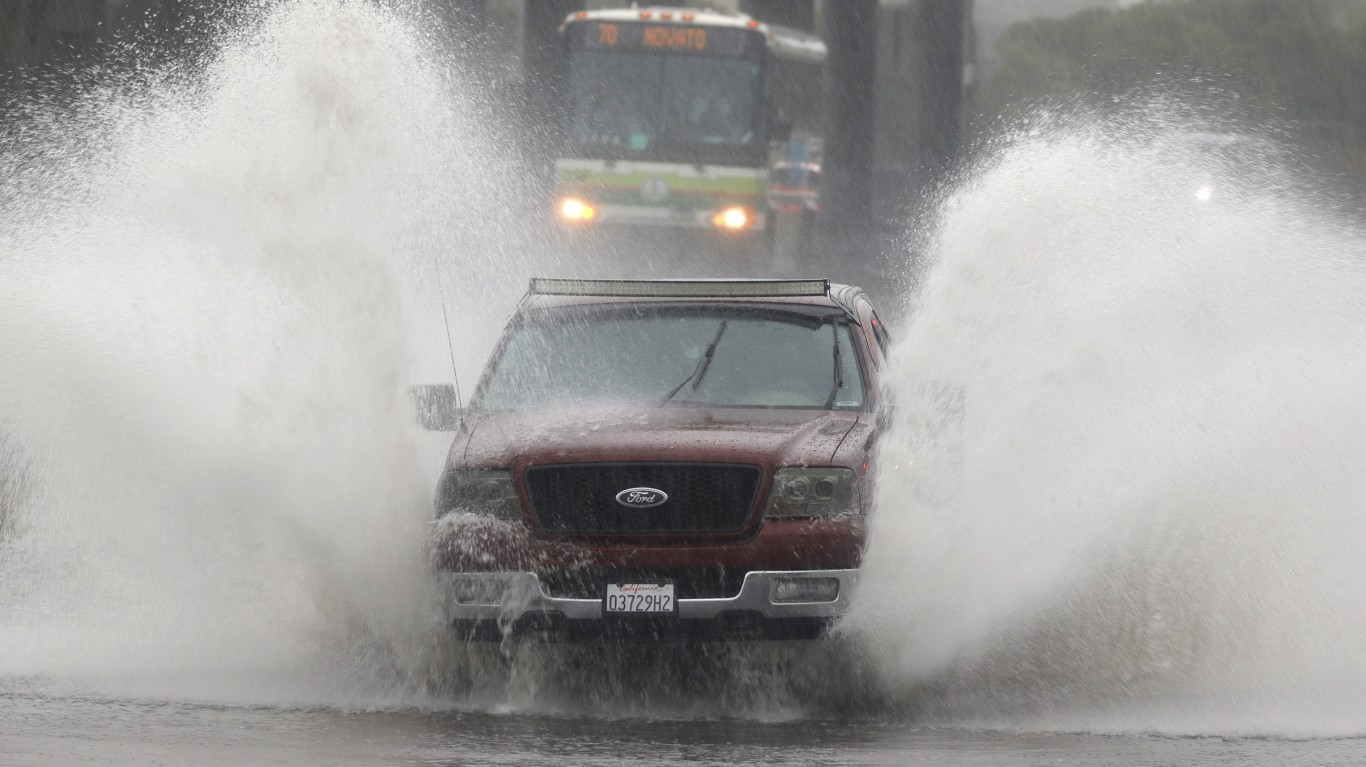
California Flooding and Severe Weather
> Duration: Jan 24, 2021 to Jan 29, 2021
> Estimated cost: $1.2 billion — #23 highest since 2020
> Estimated deaths: 2
While much of the western United States suffered from record high temperatures and drought for much of 2021, heavy downpours inundated southern and central California for five days in January. Floods and mudslides damaged residential and commercial properties, vehicles, and infrastructure, while high winds caused power outages. Snow shut down roads at higher altitudes in the Sierra Nevada range.
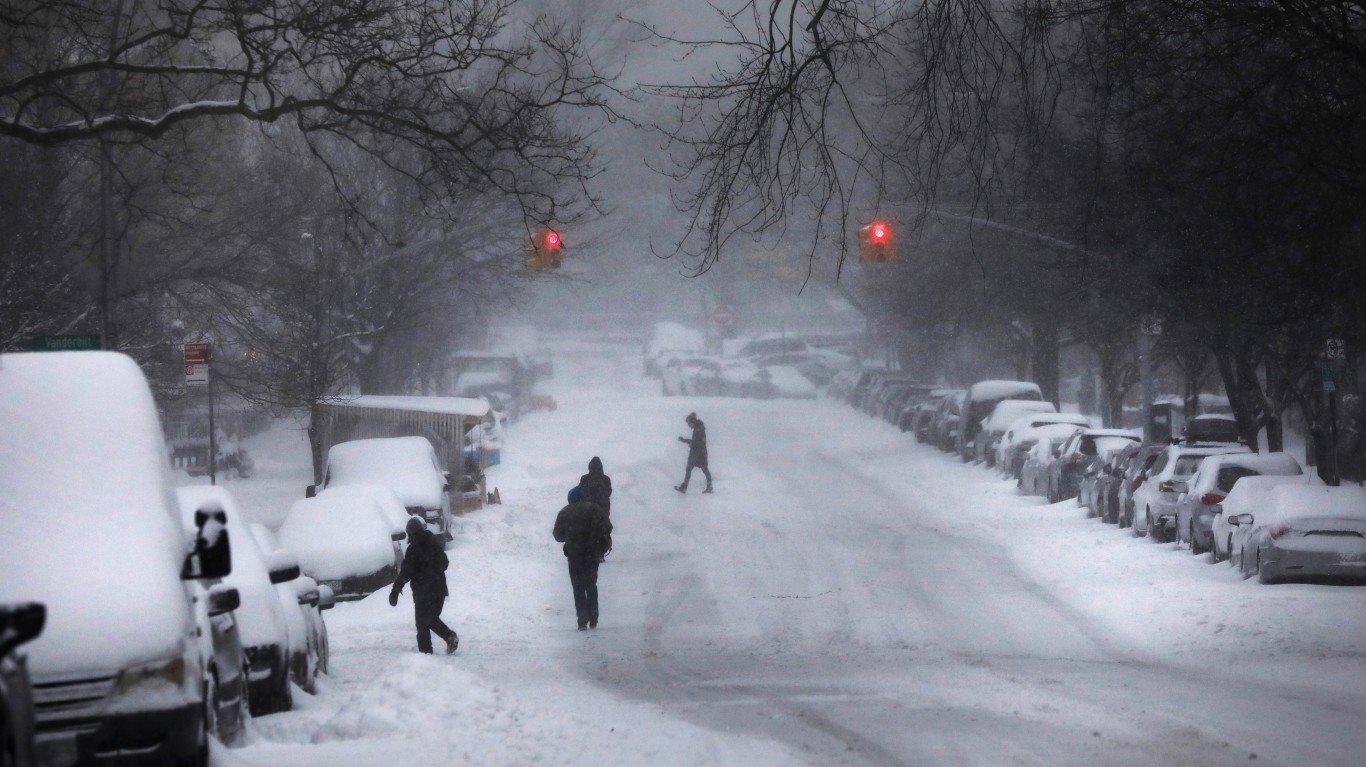
Northwest, Central, Eastern Winter Storm and Cold Wave
> Duration: Feb 10, 2021 to Feb 19, 2021
> Estimated cost: $24.0 billion — #2 highest since 2020
> Estimated deaths: 226
Historic low temperatures and a winter storm struck states across the northwest, central, and eastern parts of the country. Temperatures fell to as much as 40 degrees Fahrenheit below normal in the parts of the Great Plains plains from Nebraska to Texas. The arctic front caused power outages, notably in Texas, where most of the deaths occurred. The event became the costliest U.S. winter storm on record.
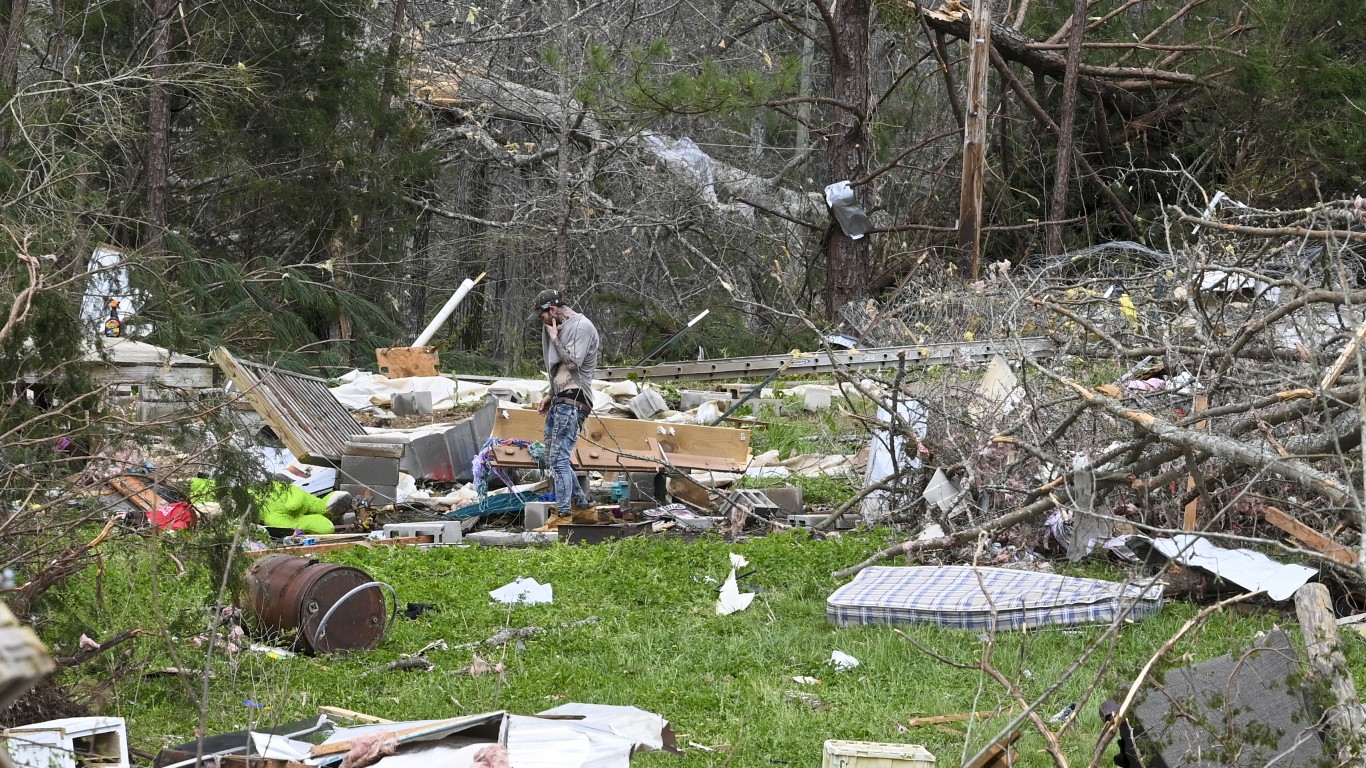
Southeast Tornadoes and Severe Weather
> Duration: Mar 24, 2021 to Mar 25, 2021
> Estimated cost: $1.8 billion — #8 highest since 2020
> Estimated deaths: 6
At least 41 tornadoes impacted Kentucky, Tennessee, Mississippi, Alabama, and Georgia. These included 15 that were ranked “Strong” to “Violent” in the Enhanced Fujita-scale of tornado intensity — with wind speeds measuring from 111 to more than 200 miles per hour. The strongest of these twisters struck communities in central Alabama and western Georgia, damaging properties and infrastructure.
[in-text-ad-2]

Eastern Severe Weather
> Duration: Mar 27, 2021 to Mar 28, 2021
> Estimated cost: $1.4 billion — #12 highest since 2020
> Estimated deaths: 8
Hail, damaging high winds, and tornadoes accompanied heavy storms in Arkansas, Alabama, Georgia, Mississippi, Virginia, Tennessee, and the Carolinas. Homes and businesses in and around Nashville were flooded. High winds from the weather system damaged properties and infrastructure in Pennsylvania, New Jersey, and Maryland.

Texas Hail Storms
> Duration: Apr 12, 2021 to Apr 15, 2021
> Estimated cost: $1.5 billion — #11 highest since 2020
> Estimated deaths: None on record
Several hail storms erupted across central Texas, damaging homes, business, and vehicles. The heaviest hail was reported northeast of Austin, southwest of The Woodlands, and west of Georgetown.
[in-text-ad]
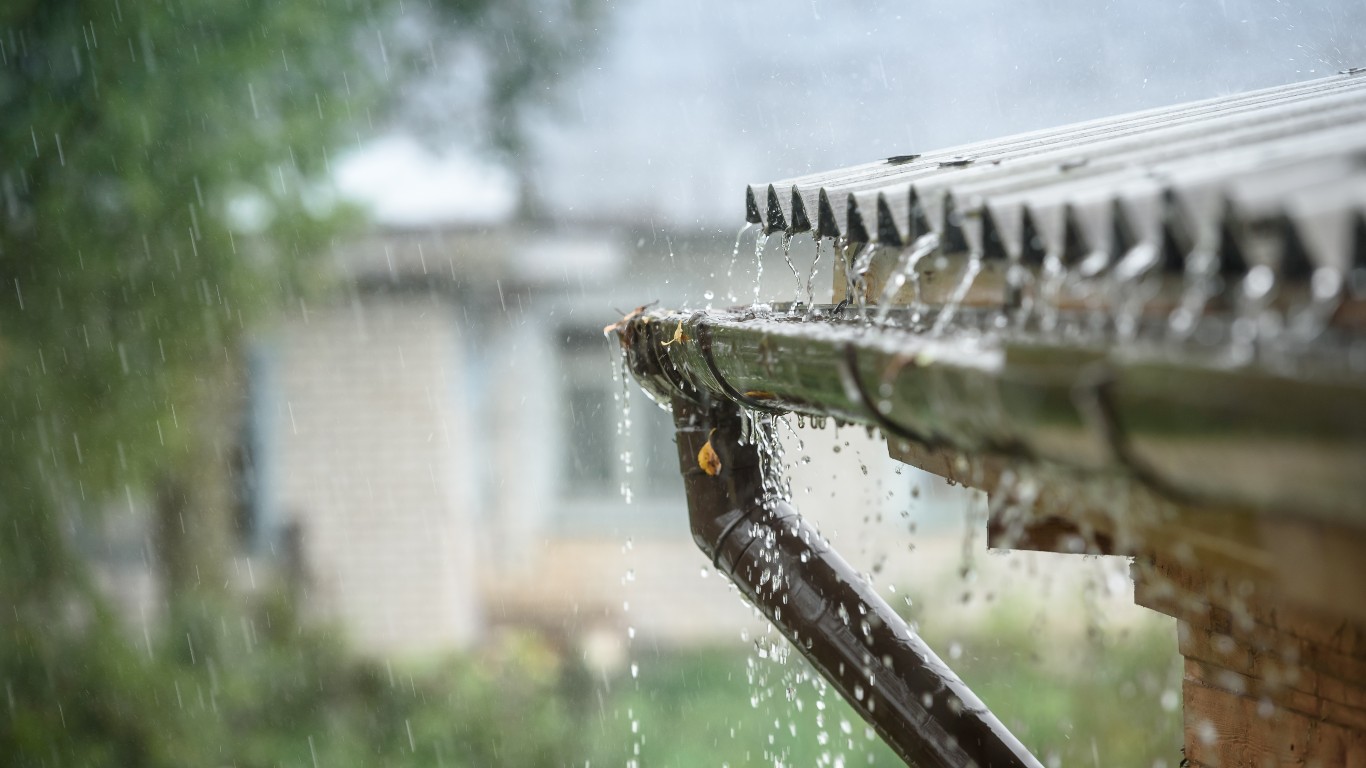
Texas and Oklahoma Severe Weather
> Duration: Apr 27, 2021 to Apr 28, 2021
> Estimated cost: $3.3 billion — #6 highest since 2020
> Estimated deaths: None on record
Tornadoes, damaging high wind, flooding and hail struck across Texas and Oklahoma, causing significant damage to properties and vehicles. The most impacted areas were in Texas, southwest of San Marcos, north of Fort Worth, and west of San Antonio.

Southern Tornadoes and Southeast Severe Weather
> Duration: May 2, 2021 to May 4, 2021
> Estimated cost: $1.3 billion — #15 highest since 2020
> Estimated deaths: 4
Less than two months after dozens of tornadoes touched down in several southern and southeastern states, more twisters, along with hail and damaging high winds, struck much of the same region. At least 111 tornadoes were reported, grouped mostly in central Mississippi and surrounding states.

Louisiana Flooding
> Duration: May 17, 2021 to May 18, 2021
> Estimated cost: $1.4 billion — #12 highest since 2020
> Estimated deaths: 5
Communities in Louisiana and coastal Texas were struck with widespread floods, resulting in hundreds of water rescues. Baton Rouge and Lake Charles were struck particularly hard by the weather event, which dumped more than 12 inches of water in a short period of time in parts of the affected area.
[in-text-ad-2]
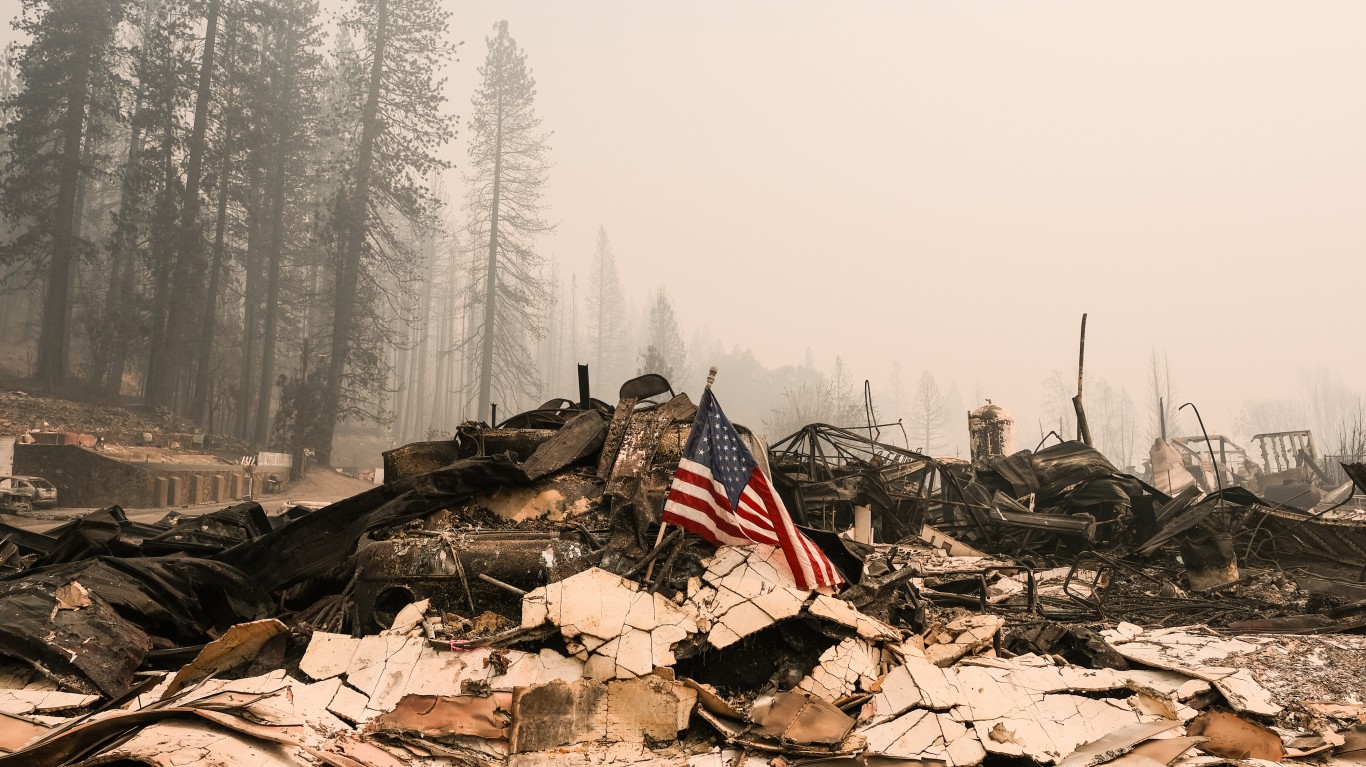
Western Wildfires
> Duration: Jun 1, 2021 to Dec 31, 2021
> Estimated cost: $10.6 billion — #3 highest since 2020
> Estimated deaths: 8
The drought and high temperatures in the western United States throughout much of 2021 caused a damaging wildfire season across California, Colorado, Oregon, Washington, Idaho, Montana, and Arizona. The Dixie Fire burnt nearly a million acres, making it the second biggest single wildfire on record in California. Other Western fires in 2021 were large enough to earn names, including the Telegraph Fire of Arizona, the Ford Corkscrew Fire in Washington, and the Bootleg Fire in Oregon. More than 7.1 million acres went up in flame in the region last year.

Ohio Valley Hail Storms
> Duration: Jun 17, 2021 to Jun 18, 2021
> Estimated cost: $1.7 billion — #10 highest since 2020
> Estimated deaths: None on record
Hail and damaging high winds blew across Ohio, Illinois, Indiana, Michigan, Wisconsin, Minnesota, Iowa, and Missouri. The most severe weather from this storm system hit southeastern Minnesota, southern Iowa, southeastern Indiana, and southwestern Ohio.
[in-text-ad]
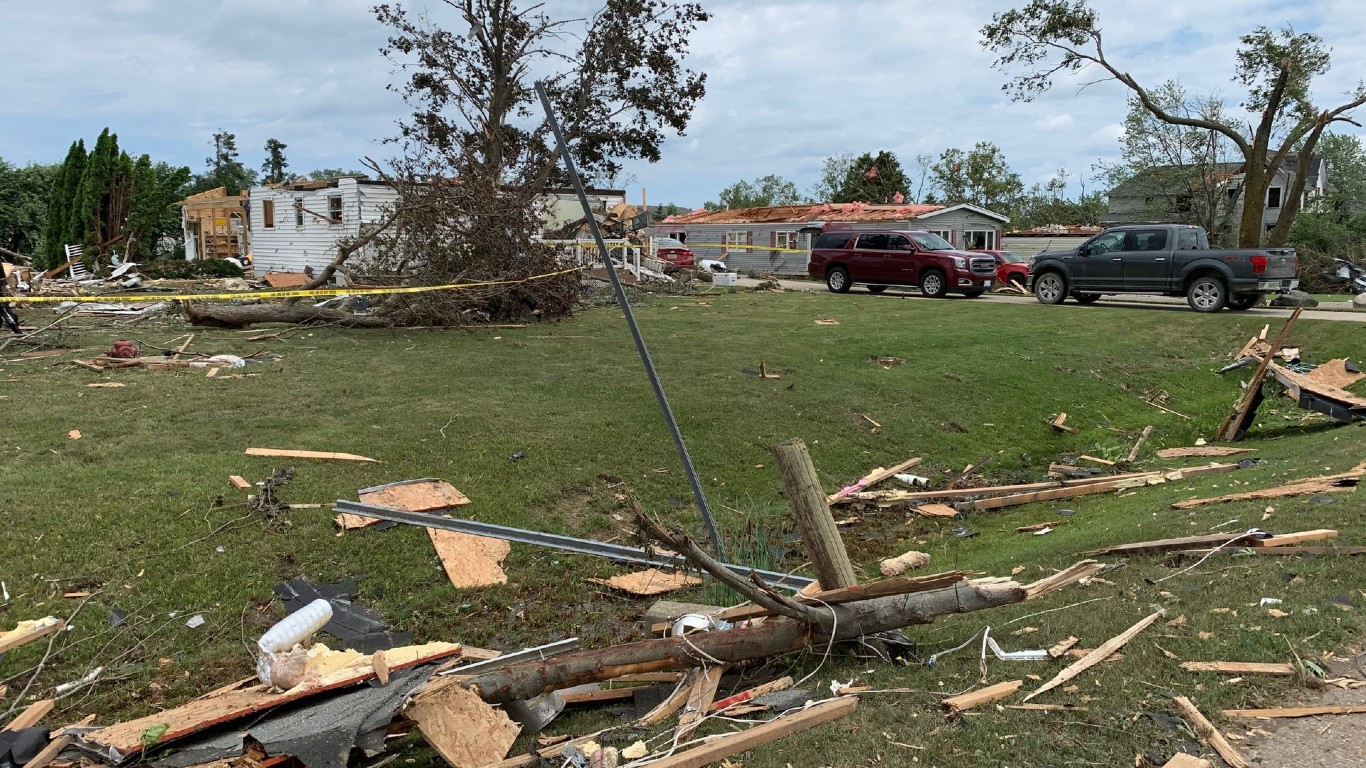
Central Severe Storms
> Duration: Jun 24, 2021 to Jun 26, 2021
> Estimated cost: $1.3 billion — #15 highest since 2020
> Estimated deaths: None on record
A mix of thunderstorms, damaging high winds, hail, and tornadoes hit areas of Michigan, Illinois, Indiana, Ohio, Missouri, Kansas, and Texas. The weather system wrecked properties, infrastructure, and crops.
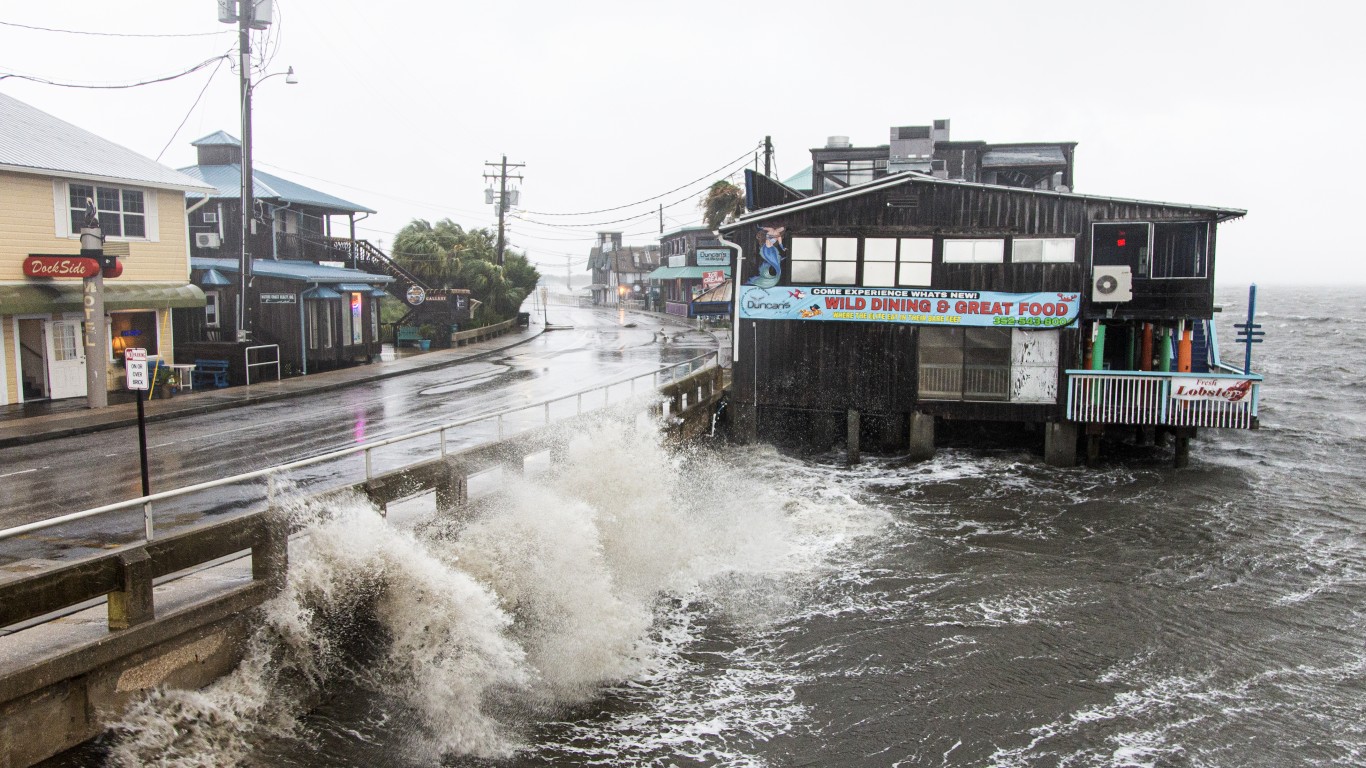
Tropical Storm Elsa
> Duration: Jul 7, 2021 to Jul 9, 2021
> Estimated cost: $1.2 billion — #23 highest since 2020
> Estimated deaths: 1
Tropical Storm Elsa, which made landfall in Taylor County, Florida, swept through parts of Florida, Georgia, and the Carolinas, producing heavy rain, wind, flooding, and tornadoes. The storm system also caused flooding in the Northeast and Southern New England, most notably flash flooding on Long Island, New York.
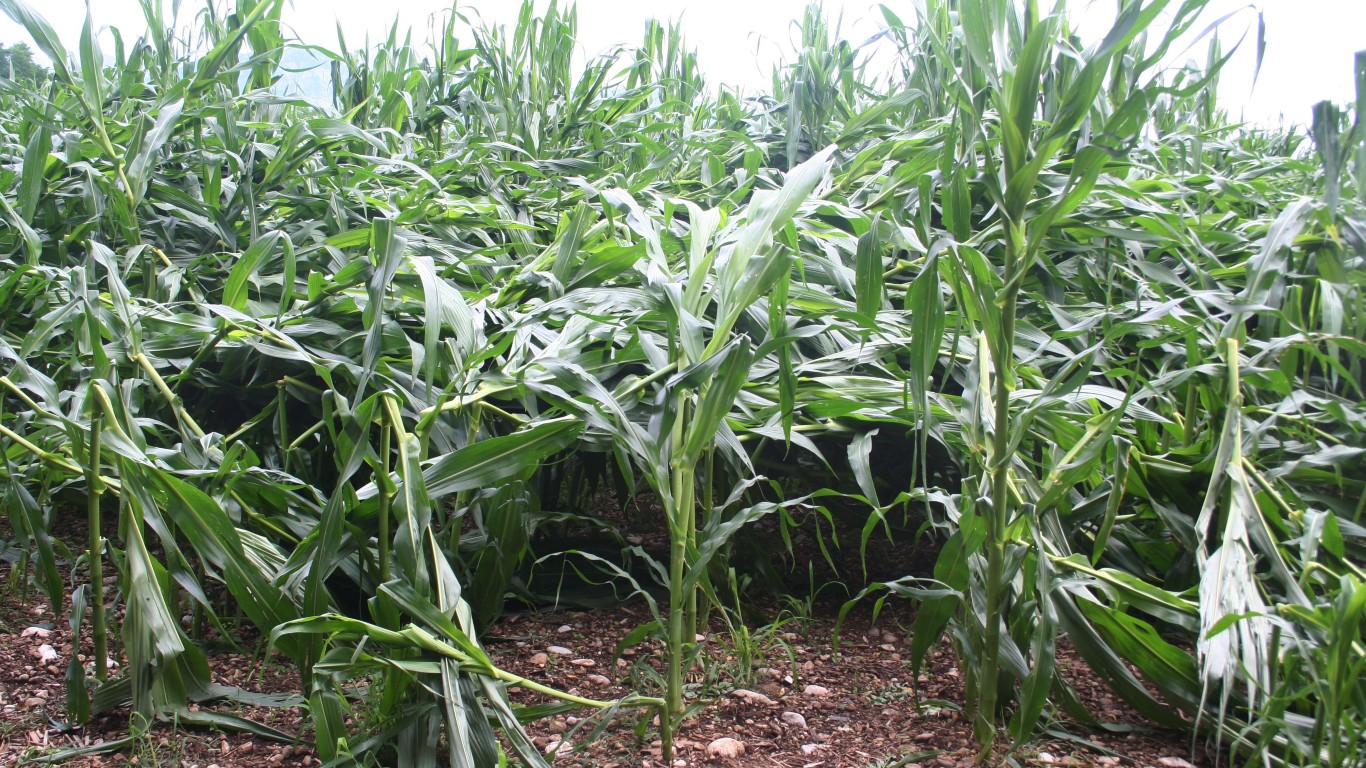
Central Severe Storms
> Duration: Jul 8, 2021 to Jul 11, 2021
> Estimated cost: $1.1 billion — #26 highest since 2020
> Estimated deaths: None on record
A severe weather system struck parts of Missouri, Nebraska, Iowa, New Mexico, Texas, and the Dakotas, causing extensive damage from hail and high winds. Damage to property and vehicles were reported in some parts of surrounding states as well.
[in-text-ad-2]

North Central Severe Weather
> Duration: Aug 10, 2021 to Aug 13, 2021
> Estimated cost: $1.3 billion — #15 highest since 2020
> Estimated deaths: 2
Three days of damaging high winds blew through parts of Illinois, Michigan, Wisconsin, Indiana, Ohio, and Missouri, toppling trees, knocking out power lines, and homes and businesses. It was the third weather system to strike the central part of the country in less than a month.
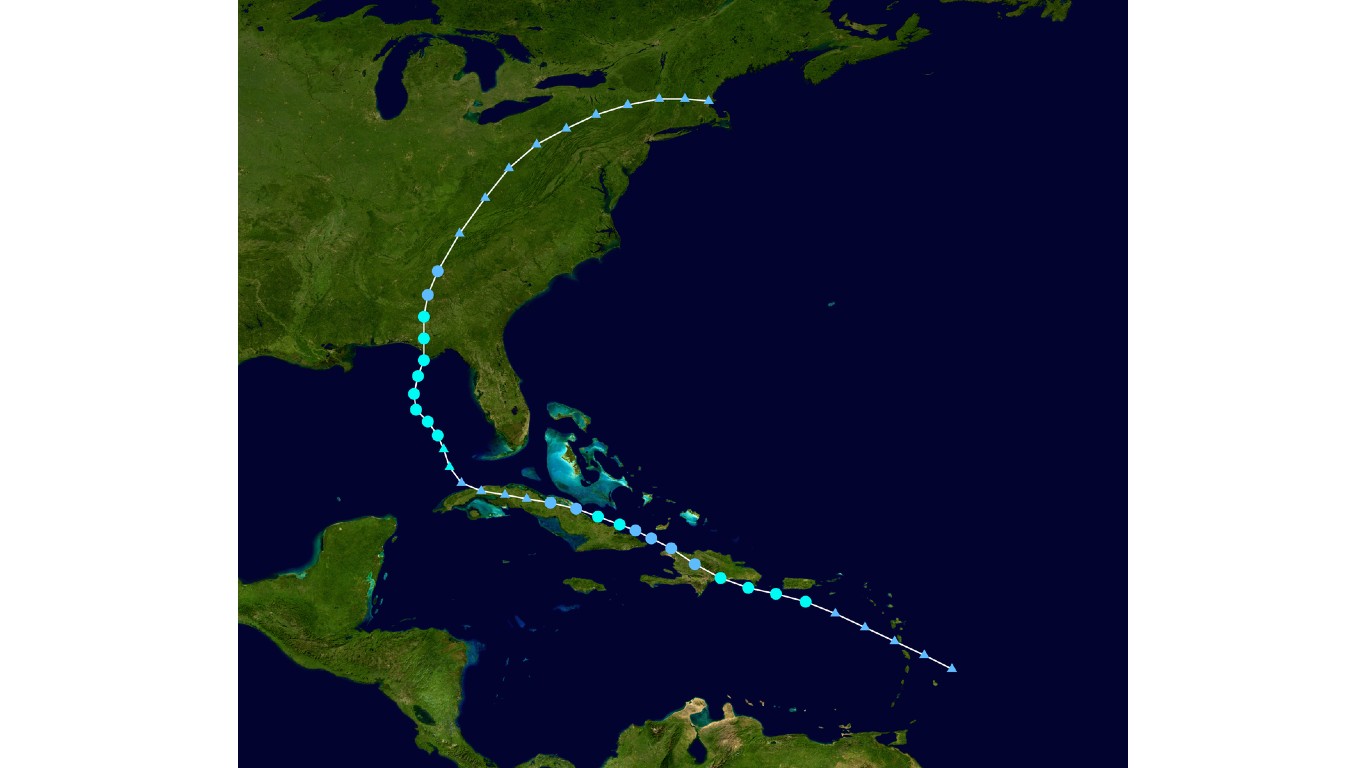
Tropical Storm Fred
> Duration: Aug 16, 2021 to Aug 18, 2021
> Estimated cost: $1.3 billion — #15 highest since 2020
> Estimated deaths: 7
After making landfall near Panama City, Florida, Tropical Storm Fred blew northward, causing severe flooding in the southern Appalachian Mountains and parts of western North Carolina. Fred also spit out several tornadoes as it moved up the Eastern Seaboard.
[in-text-ad]

Hurricane Ida
> Duration: Aug 29, 2021 to Sep 1, 2021
> Estimated cost: $75.0 billion — #1 highest since 2020
> Estimated deaths: 96
Hurricane Ida, a powerful Category 4 storm, made landfall in southern Louisiana. It is only the third hurricane to hit the state with sustained winds of 150 mph winds, dating back to 1856. The storm left behind widespread damage to Louisiana homes and infrastructure as it moved northward. Ida’s remnants merged with a storm front causing fatal flooding in the Northeast. New York and New Jersey issued their first ever flash flood emergencies, which covered the tri-state metro area of New York City.

Hurricane Nicholas
> Duration: Sep 14, 2021 to Sep 18, 2021
> Estimated cost: $1.0 billion — #27 highest since 2020
> Estimated deaths: None on record
Hurricane Nicolas, a Category 1 storm, made landfall near Sargent Beach, Texas, and moved slowly into Louisiana. Some Gulf Coast communities were still cleaning up from Hurricane Ida when Nicolas caused further flood and wind damage.

Southeast, Central Tornado Outbreak
> Duration: Dec 10, 2021 to Dec 10, 2021
> Estimated cost: $3.9 billion — #5 highest since 2020
> Estimated deaths: 93
An unusual outbreak of tornadoes occurred in late fall in several central and southeastern states. The tornadoes included two EF-4 twisters that plowed across Arkansas, Missouri, Tennessee, and Kentucky. Tornadoes are considered EF-4 on the five-level Enhanced Fujita Scale if their sustained wind speeds range from 207 to 260 mph. This was the deadliest December tornado event on record, beating a similar outbreak in Vicksburg, Mississippi, in 1953.
[in-text-ad-2]
Midwest Derecho and Tornado Outbreak
> Duration: Dec 15, 2021 to Dec 15, 2021
> Estimated cost: $1.8 billion — #8 highest since 2020
> Estimated deaths: 1
Just days after a tornado outbreak in central and southern states, parts of Kansas, Nebraska, Iowa, Minnesota, and Wisconsin were struck with hurricane force wind gusts from a storm system that also produced more than 50 tornadoes, inflicting widespread damage to properties and infrastructure. Minnesota recorded its first December tornadoes since 1950.

Tornado Outbreak, Southern
> Duration: Mar 30, 2022 to Mar 30, 2022
> Estimated cost: $1.3 billion — #15 highest since 2020
> Estimated deaths: 2
Public and private properties were significantly damaged across the Gulf Coast from Louisiana to Florida by an outbreak of 83 tornadoes, including three considered “Strong” on the Enhanced Fujita Scale of tornado intensity. A school, a municipal airport and many homes and businesses in Washington County Arkansas were damaged by one of these stronger tornadoes.
[in-text-ad]

Southeast, Tornado Outbreak
> Duration: Apr 4, 2022 to Apr 6, 2022
> Estimated cost: $1.3 billion — #15 highest since 2020
> Estimated deaths: 3
A springtime outbreak of 100 tornadoes touched down in Texas, Louisiana, Mississippi, Alabama, Georgia, Florida, and South Carolina, including 13 that registered as “Strong” to “Violent” on the Enhanced Fujita Scale of tornado intensity. The strongest of these tornadoes struck Pembroke, Georgia, with sustained winds of 185 mph, wrecking several neighborhoods.
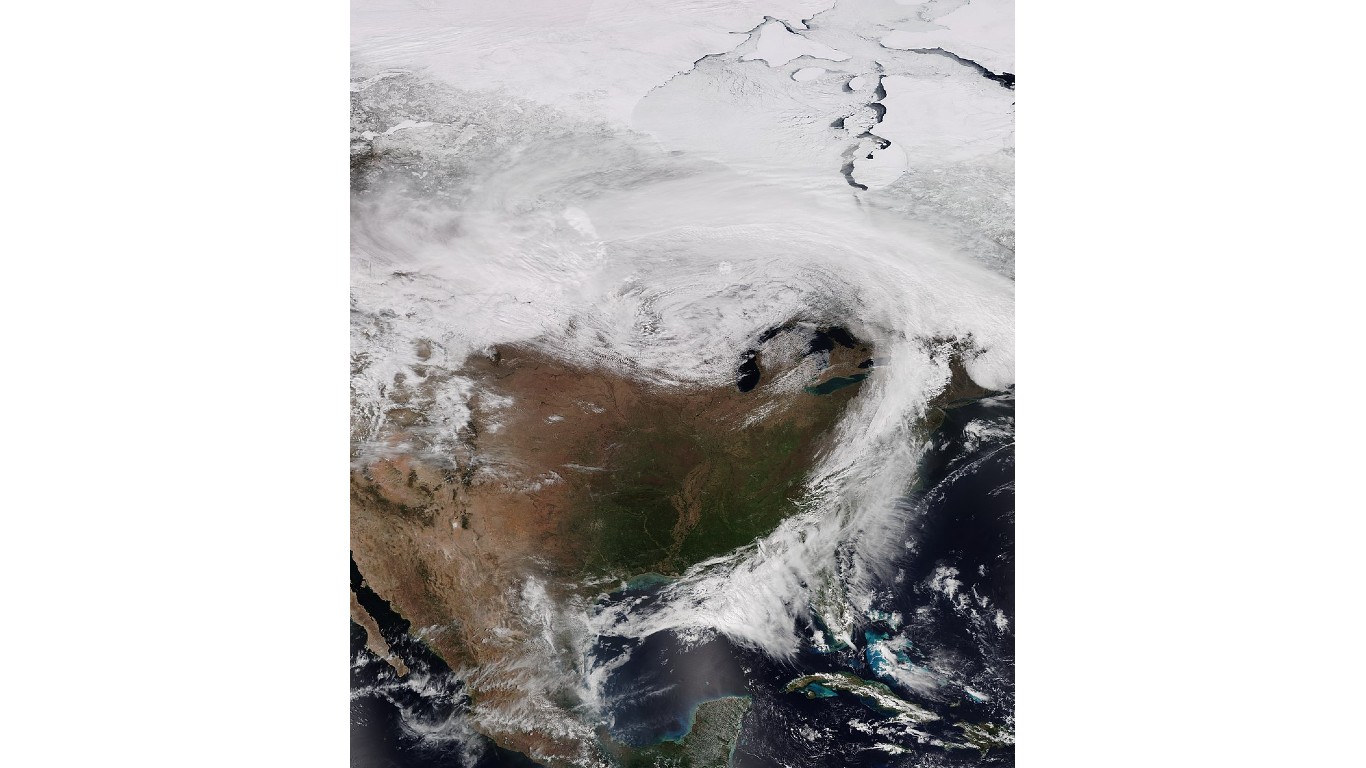
Southern Severe Weather
> Duration: Apr 11, 2022 to Apr 13, 2022
> Estimated cost: $2.2 billion — #7 highest since 2020
> Estimated deaths: 1
Severe weather erupted across Arkansas, Louisiana, Mississippi, Alabama, Texas, Tennessee, and Kentucky. Hail contributed to damage in Central Arkansas while damaging high winds blew across central Mississippi, northeast Arkansas, and west-central Kentucky. Hail damage from this system was also reported in Wisconsin and Minnesota.

Hail storms, North Central
> Duration: May 9, 2022 to May 9, 2022
> Estimated cost: $1.2 billion — #23 highest since 2020
> Estimated deaths: None on record
Communities from south-central Minnesota to western Wisconsin experienced hail storms, with hail as large as a baseball in some places. The storm damaged properties and public infrastructure.
[in-text-ad-2]

North Central Severe Weather
> Duration: May 11, 2022 to May 12, 2022
> Estimated cost: $1.3 billion — #15 highest since 2020
> Estimated deaths: 1
Parts of South Dakota, Minnesota, Wisconsin, and Nebraska were struck with severe weather that brought damaging high winds and hail. More than two dozen tornadoes touched down in eastern South Dakota and central Minnesota, damaging properties and crops.

North Central Hail Storms
> Duration: May 19, 2022 to May 19, 2022
> Estimated cost: $1.3 billion — #15 highest since 2020
> Estimated deaths: None on record
Just 10 days after sustaining extensive damage from a hail storm, parts of Minnesota and Wisconsin bore the brunt of another series of hail storms. Some of the hail was reported to be as large as a golf ball, enough to damage rooftops, vehicles, and infrastructure.
[in-text-ad]

Central Severe Weather
> Duration: Jun 7, 2022 to Jun 8, 2022
> Estimated cost: $1.4 billion — #12 highest since 2020
> Estimated deaths: None on record
Parts of Ohio, Iowa, Texas, Oklahoma, Missouri, Kansas, Nebraska, and Colorado were struck with severe weather that brought damaging hail and high winds and more than two dozen tornadoes. Nebraska was particularly hard hit, with the weather system causing extensive damage to property, infrastructure, and crops.
The thought of burdening your family with a financial disaster is most Americans’ nightmare. However, recent studies show that over 100 million Americans still don’t have proper life insurance in the event they pass away.
Life insurance can bring peace of mind – ensuring your loved ones are safeguarded against unforeseen expenses and debts. With premiums often lower than expected and a variety of plans tailored to different life stages and health conditions, securing a policy is more accessible than ever.
A quick, no-obligation quote can provide valuable insight into what’s available and what might best suit your family’s needs. Life insurance is a simple step you can take today to help secure peace of mind for your loved ones tomorrow.
Click here to learn how to get a quote in just a few minutes.
Thank you for reading! Have some feedback for us?
Contact the 24/7 Wall St. editorial team.